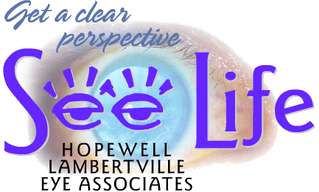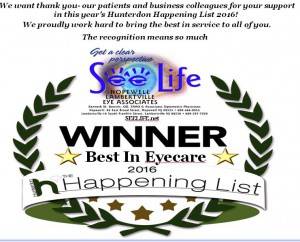vA wide range of Contact Lenses to fit your needs ...

We offer all types of contacts lenses for each patient’s individual needs. Fortunately, our office serves as a “beta” site for many contact lens manufacturer’s giving us access to a vast variety of contact lenses that would not be available elsewhere including new soft and gas permeable lenses as well as new technology lenses.
Dr. Daniels is able to share his vast experience with his patients in the area of contact lens. He is the former Director of Cornea and Contact Lens Research at Pennsylvania College of Optometry at Salus University and is also a certified NEI (National Eye Institute) investigator on the CLEK study for Keratoconus and book – chapter author on various topics on complications of refractive surgery, dry eye, presbyopia and contact lens related complications. He has a particular expertise in contact lens fitting for various corneal disorders and post surgical concerns after cataract or refractive surgery

Daily Disposable Contacts
With the advancements in engineering and design, there is a multitude of daily disposable contact lens options. Daily Disposable lenses not only offer excellent vision, but more importantly safety due to single use avoiding many complications associated with re-usable contacts. There is no need for costly and inconvenient care products. Simply insert in the morning – discard at night. This option has expanded to astigmatic and multifocal (presbyopic) designs.
NaturalVue Depth of Focus Daily Disposable Soft Contacts
A new design develop by an optometric aero-space engineer utilizes a totally new optical design to enhance vision via a “pin hole” depth of focus effect. Not only is this good as a presbyopic correction but also for kids for myopia control.
Multifocal lenses
For presbyopia using soft lens designs such as Proclear, Biofinity, AcuVue, CVue, Air Optix. Many of these lenses can also be customed designed to correct astigmatism as well as reading and distance. There are also Hybrid designs (Synergeyes Duette MF or Progressive) and Gas permeable designs such as Mandell Seamless and Natural Vision.
Toric Astigmatic Contact Lens
An astigmatism is not a disease it is a refractive error due to the shape of the cornea. Fortunately there are many options to correct not only myopia (nearsightedness) or hyperopia (farsightedness) but also the combination with astigmatism.
Options are vast including soft toric lenses (disposable and daily disposable), gas permeable lenses, hybrid (Synergeyes) lenses, and Scleral lenses. There are even designs that also correct for the mentioned but also can correct with a multifocal design for presbyopia (over the age 40 eyes).
Cosmetic - Theatrical Contacts Lenses
Feel like change your style and looks – there are many options for cosmetic – refractive contact lenses.
Virtual try on new EYE COLOR CHANGING contact lenses
Check out the new Air Optix Colors. You can even upload your own image to try out the color options.
http://www.airoptix.com/colors/color-studio.shtml

We also offer Theatrical Lenses – for the special occasion from our custom lab.

Wavetouch
The first and only true aberrational correction soft contact lens that corrects vision similar to the perception of a HD plasma television. These lenses correct what are called low order (LOA) and high order (HOA) aberrations. Aberrations are often best described as halos or spokes are lights, ghosting and haze of visual perception. Via specialized computer assisted wavefront technology, these lenses are designed to fit not only the corneal anatomy but customize the optics for each individual eye just like a fingerprint.
Synergeyes family of lenses
Hybrid lenses incorporating the comfort of soft lenses with the quality optics of gas permeable. These lenses are utilized to enhance vision similar to a gas permeable lens with the added comfort of a soft lenses. These amazing lenses are not only extremely comfortable but can full address corneal astigmatism, keratoconus, presbyopic (over 40 eyes) with multifocal designs yielding HD vision due to the gas permeable optics and the stability afforded by the soft lens skirt.
Read more about Hybrid Lenses T:


Gas Permeable Rigid Lens
Your eye doctor may call them GPs or RGPs. GP contacts are made of a firm, durable plastic that transmits oxygen. They offer excellent eye health: because they don't contain water like soft lenses do, they resist deposits and are less likely than soft contacts to harbor bacteria.
GP contact lenses are made of a firm bio-compatible and highly breathable plastic that transmits oxygen. They offer excellent eye health: because they do not contain water like soft lenses do thus resists that visually decreases vision harbor potentially harmful bacteria. GP lenses are easy to insert and maintain. They do not dehydrate avoiding dry eye relations to contact lenses.
GP lenses can be customized designed using computer assisted technology to complement the corneal anatomy and to optimize vision no matter what refractive issue exist. They are particularly better for patients with irregular cornea, for an individual whom might appreciate distortions and glare, myopia control for kids and adults or as alternative to refractive surgery, and there are many multifocal options for folks over 40.

Read more about Gas Permeable Lenses at:
http://www.contactlenses.org/whatare.htm
http://www.allaboutvision.com/contacts/rgps.htm
Myopia Control Lenses
Progressive myopia (nearsightedness) with children is considered an epidemic based on several peer reviewed and NEI studies. The high utilization of digital devices, intensity and prolonged nearpoint work, family related anatomy (if the parent is nearsighted – high likelihood the child will be) and lack of outdoor visual stimulation are seen as the main issues behind myopia progression.
However, there is an option beyond eyeglasses. The technique is called Orthokeratology (straightening the cornea) similar to what orthodontia is for dentistry.
The basic concept of the fit is to design a lenses that will complement the corneal anatomy and address a curvature that will reduce the present level of nearsightedness. The lens, which can also address astigmatism, is worn during the sleeping hours and removed in the morning before school or work.
This option is particularly excellent, not only for the control of myopia progression, but excellent for the athletically inclined individual to avoid any form of contact lens use during sport (does not preclude safety eyewear), but for individuals whom wish to be free of contact lens issue during waking hours such as dryness, visual variability with astigmatic lenses, presbyopic – reading issues, or for individuals whom wish to function with eyewear and wish to avoid refractive surgery.
It is a simple process using gas permeable contacts that are designed to re-shape the cornea during sleeping hours to “flatten the cornea” to reduce myopia. Good candidates for Ortho K or CRT (corneal refractive therapy) include young adults 8 and older as well as adults whom wish an alternative to refractive surgery. It is best performed at an early age to prevent myopic progression prior to the individual approaches a power of 4 diopters.
Read more about OrthoKeratology or CRT lenses at:
http://www.contactlenses.org/orthok.htm
http://www.orthokacademy.com/for-patients/

Scleral Contact Lenses
These lenses are probably the most comfortable lenses a patient could ever wear yielding “HD” quality vision. This a unique design that corrects all levels of vision, particularly if there is an irregularity or disease of the eye. These are excellent lenses that require a more advanced computerized and diagnostic fitting offered by our office.
Scleral lenses are large diameter rigid gas permeable lenses that range from 14 mm to over 20 mm in diameter. They are termed “scleral” lenses because scleral lenses completely cover the cornea (the clear dome of tissue that covers the colored part of the eye) and extend onto the sclera (the white part of the eye that forms the outer wall of the eye).

Why are the advantages of scleral lenses?
Large diameter scleral lenses offer certain advantages over corneal lenses. First, large-diameter lenses may be more comfortable than corneal lenses. The cornea is one of the most highly sensitive tissues in the body. The conjunctiva (soft, clear tissue that lies over the sclera) is much less sensitive than the cornea. Lenses that rest primarily or exclusively on the conjunctiva may induce less sensation than smaller lenses that rest upon the cornea. This is why scleral lenses are extremely comfortable.
In some patients, corneal tissue is damaged. Because scleral lenses do not touch the cornea, the cornea is bathed all day long with preservative free saline to rejuvenate the ocular surface. Scleral lenses extend under the upper and lower lids and rarely dislocate. Scleral lenses demonstrate excellent centration and stability.
Who could potentially benefit from scleral lenses?
Patients with irregular corneas, patients with conditions that affect the tear film, and patients with refractive error (nearsightedness, farsightedness, astigmatism and presbyopia) who are unable to wear other forms of correction could benefit from scleral lenses.
Conditions such as keratoconus and pellucid marginal corneal degeneration cause irregularity of the cornea. Surgery (keratoplasty, refractive surgery) can also lead to corneal irregularity. If the cornea is not smooth, vision will not be easily correctable with spectacles or most soft contact lenses. Scleral lenses mask this irregularity and allow for improved vision by providing a smooth front surface.
Some patients have disorders that affect the quality or quantity of tears that help to keep the eye’s surface smooth and healthy. Dry eye syndrome, graft vs. host disease, Sjögren’s syndrome, Stevens Johnson syndrome, and neurotrophic keratopathy are examples of such conditions. Some inflammatory conditions, including limbal stem cell deficiency and ocular cicatricial pemphigoid, also cause serious damage to the front surface of the eye. Patients who cannot close their lids completely may also experience problems with the health of the surface of the eye. The fluid reservoir beneath a scleral lens may improve comfort, and may allow the corneal surface to heal.
Patients who need visual correction, but are unable to wear other contact lenses, may find scleral lenses more comfortable than other lens designs.
You may benefit from scleral lenses if you have one of the following conditions:
- Keratoconus
- Post-corneal transplant
- Pellucid marginal degeneration
- Severe dry eyes
- Graft versus host disease
- Sjögren’s syndrome
- Stevens-Johnson syndrome
- Neurotrophic keratopathy
- Chronic inflammatory conditions
- Limbal stem cell deficiency
- Ocular cicatricial pemphigoid
- Myopia
- Hyperopia
- Astigmatism
- Presbyopia
- Other corneal conditions
Most insurance programs do not automatically cover the full cost of scleral contact lenses. In some cases, vision insurance may reduce the cost of your lenses and/or fitting fee. In other instances, contacting your medical insurance provider and inquiring what steps are necessary to obtain coverage can be helpful. Ask your eye doctor's office for details.
Also, some eye care practitioners offer financing options for scleral contacts
Future of Contacts Lens: Smart Contacts

Smart contact lenses are no longer science fiction. Using using micro-electromechanical system (MEMS) technology, which is incorporated into the contact lens. In the last few years we have covered several smart contact lenses with different purposes. One of these electronic contact lenses is the Sensimed Triggerfish, a device capable of continuous measurement of the intra-ocular pressure (IOP). It is the first of its kind, since current measurements of IOP, like applanation tonometry and air-puff tonometry, can only give us the IOP at a certain moment, whereas the Triggerfish can monitor the course of the IOP throughout the day. As we write this, the Triggerfish is already being clinically tested.
Contacts are not just for vision anymore. In the near future contacts will be used for systemic and ocular health monitoring and treatment. As an example the Sensimed Triggerfish Glaucoma or Diabetic Monitor via a contact lens mounted sensor.

Augmented Reality as seen only in the movies is not far down the road as seen in this depiction of a VR contact lens.

How about getting rid of drops or even oral medications and injections. Drug eluding contact lenses for delivery of medication. New nanoparticle technology infused into the contact lens will allow for the delivery of medication in a dose specific regiment by simply putting in your contacts.

Read more about the future technologies of contact lenses at:
http://www.clspectrum.com/issues/2012/november-2012/ophthalmic-drug-delivery-through-contact-lenses
Dr. Daniels is able to share his vast experience with his patients in the area of contact lens. He is the former Director of Cornea and Contact Lens Research at Penn. College of Optometry and is also a certified NEI (National Eye Institute) investigator on the CLEK study for Keratoconus and book - chapter author on various topics on complications of refractive surgery, dry eye, presbyopia and contact lens related complications. He has a particular expertise in contact lens fitting for various corneal disorders and post surgical concerns after cataract or refractive surgery.
We're conveniently located in Hopewell and Lambertville, NJ to serve you.
Learn about content lense care for safety:
- Scleral lenses are rigid contact lenses for hard-to-fit patients and are ideal for people with a vision prescription that exceeds the standard parameters of soft contacts.
-
... A new clean and fresh health pair... Every Day!
- ... Want to change, enhance or illuminate your eye color? Want WILD eyes?




